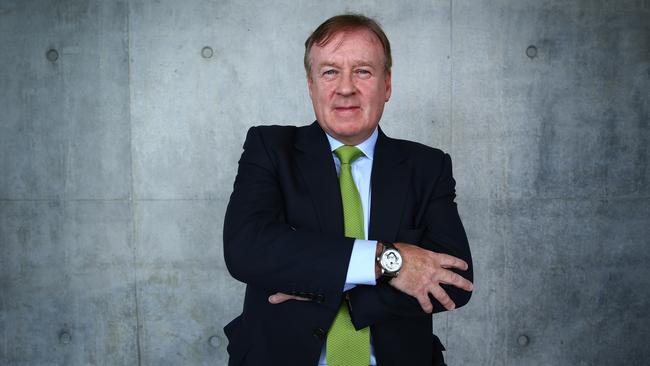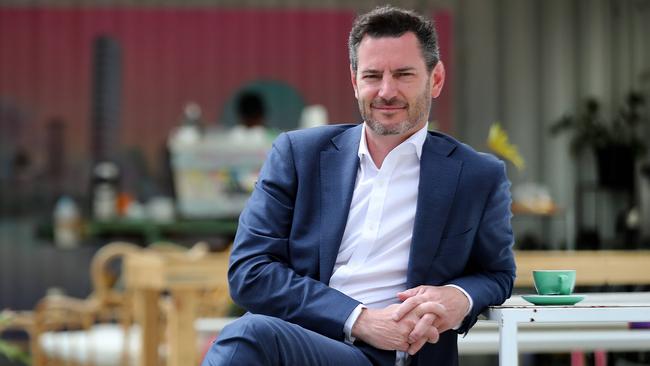Judo beats expectations as Zip Co forced to fight BNPL cash burn

Judo chief executive Joseph Healy calls the business bank’s first full-year results since listing a black belt performance.
Market attention has turned to how fast the bank can rise up the dans. Judo, the specialty banker to SMEs, beat all its prospectus forecasts and is the only one of four neo-banks given a licence in 2019 still independently trading.
A net profit of $9m and a statutory loss of $8m is in line with consensus. Profit before tax of $15.6m was twice the prospectus print.
Judo must now take the metrics to scale, planning to grow the loan book from $6bn to over $9bn.
In May, Healy proclaimed to be paranoid about inflation and rising interest rates. He is now reassured by economist forecasts on the peak cash rate that suggest Australia will avoid a recession.
And Judo has also done its own deep-dive risk analysis of over 1000 customers, which Healy says shows resilience in the vast majority of SMEs.
Even if Australia does slump into recession, the former National Australia Bank senior banker believes Judo can still grow.
“History shows the major banks will pull back as risk appetite reduces. Good businesses get caught up in a one-size-fits-all policy response and Judo would benefit from that,” he says.
Judo’s loan book grew 73 per cent to $6.1bn in June and Healy says it is on track to reach $9bn next year as Judo expands across the country and builds specialisation in agriculture and health.
“We are confident. That is why we put out the FY23 guidance in a market environment where few companies are willing to provide guidance,” he says.
The number of relationship bankers has swelled from 98 to 125, with the queue to join Judo as long as Collins St, Healy says.
Judo’s other attraction is a high net interest margin, which the bank says can be sustained at over 3 per cent with SMEs rather than mortgage borrowers.
“You have a lot more flexibility in pricing risk because you are not pricing a highly commoditised product,” Healy says. There is equal confidence in the deposit market, where Judo prices around 60 basis points above the big banks for six, nine and 12 months.
Deposits are price-elastic so Judo builds deposits to the level it wants using price as the mechanism. And with those SME borrowers, the bank has flexibility in how to offset rising deposit costs.
Hopes high as Zip dips
Young financier Zip Co is in a very different state.
The buy now, pay later firm that spent the pandemic chasing Afterpay into overseas markets posted a $1.1bn loss for 2022 and is pulling out of Britain to reduce cash burn. The result is a lesson in overreach during soft markets. The share price has fallen 78 per cent this year, over 10 per cent in the last five days and 2 per cent on results day.

Zip operating chief Peter Gray calls out a really solid second half.
Zip had lowered the loss performance in a rising rate market. Bad and doubtful debts, which exceeded Zip’s target, would continue to come down to target and below in the medium term.
The strong cash result delivered in Australia and a pivot on strategy put the firm in a good position to show profitable growth and cash flow break-even in the current financial year, he said.
“We obviously made some decisions to reset strategy and have implemented a number of actions which are already delivering clear bottom line benefits,” says Gray.
Analysis by McLean Roche’s Grant Halverson, reported in The Australian last week, is scathing an the outlook for BNPL players. Halverson says they are in a perfect storm as funding costs rise and the economy slows – a bad time to be trying to climb out of unprofitability.
If rates go over 2.65 per cent every BNPL transaction is under water, he says. And $30m that Zip signalled in cost savings “will just be wiped away” by higher funding costs that would be double that figure. Gray says savings are but one lever and the McLean Roche analysis wrongly lumps all BNPLs together. Zip makes money from both the merchant and the consumer, capital is recycled very quickly and repricing for both merchant and consumer mildly offsets rate rises.
“We acknowledge we are in a rising interest rate market but we have increased margins in Australia in response. Our profit and revenue has grown faster than our volume,” says Gray.
If rates do reach 2.6 per cent Gray says this would have minimum impact on the business.



